On today’s episode of The Spa Dr. Podcast, we’re covering beauty tips with a focus on esthetic treatments for both at home and in clinic.
My guest is Rachel Varga BScN, RN, CANS who is a Board Certified Aesthetic Nurse Specialist, an international clinical trainer, speaker, and academically published award-winning author in the field of plastic and aesthetic nursing. Rachel helps inspire others through education on skin care, skin and laser rejuvenation, non-surgical solutions, and healing lifestyle practices, with her unique toolkit to navigate and strategize aging gracefully.
In this interview, Rachel shares her top beauty tips from at home skin care and DIY to in clinic procedures. We cover derma rollers, microneedling, red light therapy, lasers and more…And, in the end, we talk about where real beauty and radiance comes from.
So please enjoy this interview…
To learn more about Rachel Varga
Website: rachelvarga.ca
To receive 15% off a consultation with Rachel Varga, use this code: Thespadr15
My FREE “day planner” for rejuvenation treatment planning AND my Sophisticated Skin Cheat Sheet! Click Here:
For assessment and education on skin care, skin/laser treatments, and non-invasive skin rejuvenation, Click Here:
For a strategic guidebook for learning about the most effective rejuvenation solutions available today, Click Here:
To take The Masterclass with Rachel and her husband where they dive into all things mindset, motivation, diet, nutrition, self care, skin, rejuvenation, sex and relationships for living our most vibrant and radiant versions of ourselves, Click Here:
Social Media: She is on Facebook and Instagram @Rachel Varga official
Beauty DIY and Treatments Tips
Dr. Trevor Cates: Welcome to The Spa Dr. Podcast. I am Dr. Trevor Cates. On today’s episode of the podcast we are covering beauty tips with a focus on aesthetic treatments for both at home and in the clinic. My guest is Rachel Varga, who is a board certified aesthetic nurse specialist. An international clinical trainer speaker, and academically published award winning author in the field of plastic and aesthetic nursing.
Rachel helps inspire others through education on skin care, skin and laser rejuvenation, non-surgical solutions and healing lifestyle practices. With her unique toolkit to navigate and strategize to help people age gracefully. In this interview, Rachel shares her top beauty tips from at home skincare and DIY to in-clinic procedures. We cover Derma rollers, microneedling, red light therapy lasers, and more. And in the end, we talk about where real beauty and radiance comes from. So please enjoy this interview.
Dr. Trevor Cates: Rachel is so great to have you on The Spa Dr. Podcast. Welcome.
Rachel Varga: Thank you so much for having me, Dr. Trevor Cates. It is just an absolute honor to be here. You were just on my podcast as well, the Rachel Varga podcast. So it is great to share with your audience, a few skin tips and tricks as well.
Dr. Trevor Cates: Yes. And you do have some. What would you say is your number one beauty tip?
Rachel Varga: I have to say it has to be the free stuff, which is really what is getting to the juice and, what is the juicy part of beauty. It is really ironic coming from someone like myself. Who has basically built a career on offering aesthetic procedures and teaching other aesthetic doctors and nurses all over the world how to do these things.
Rachel Varga: But really what I started to clue into was what my most vibrant and radiant patients are doing, which are women who are meeting with me for the first time in their fifties, sixties, seventies, eighties, and even nineties. I started to take notes out of their playbook. What are they doing? Well, they typically have some type of spiritual practice.
Rachel Varga: You have a background with your Masters in Spirituality, among many other things. And really performing daily exercise in a way that’s right for them, but really balancing the cardio, the flexibility, the stability, and the weight training. Obviously what they’re doing to facilitate balance on all different levels, body, mind, spirit, and energy. But yeah, skincare and all of that stuff does play a role.
Rachel Varga: But it’s funny when people meet with me for the first time, especially in their sixties, and they have never used curated, customized skincare that’s right for them, or had an aesthetic procedure. They just have that inner glow, that inner beauty, that inner radiance that you can’t quite put your finger on what it is that makes them so special when they come into a room.
Rachel Varga: But that is my number one beauty tip is to learn how to cultivate that within yourself, which is going to happen when you pay attention to your body, mind, spirit, energy, and the balance of all of those.
Dr. Trevor Cates: Yeah, absolutely. It certainly is a balance of that. With your skincare routine, what do you like? What are the things that you recommend for people at home?
Rachel Varga: Yeah, and the funny thing is for the longest time, I don’t know why I wasn’t sharing that. I wasn’t really wanting to do solo episodes on my platforms. I was wanting to interview other experts and have conversations around things. Yes, now I am officially sharing my routines with you guys. And my daily and nighttime routine is non negotiable.
Rachel Varga: I am acne prone, and that time of the month, like a week before my period starts. It’s like, Oh, there are some breakouts starting to happen. Always cleansing the skin morning and night. Sometimes I will even do a double cleanse with my cleanser that I use that is specifically designed for acne prone, skin, folic acid for oil control, which also takes off my mineral sunscreen and my mineral makeup, which is free of parabens, valet, sulfates, artificial dyes, fragrances, and not tested on animals.
Rachel Varga: Those are absolute ingredients that you want to avoid across the board in all of your beauty products. Then of course, following that up with a moisturizer. Then if it’s in the daytime, I will definitely use my mineral based sunscreen every single day. I love using SPS with a combination of zinc and titanium in them.
Rachel Varga: I just find that the formulations are a little bit less sticky when there’s a blend of both, as opposed to say, just zinc that isn’t micronized, it has a really thick, tacky feel. I love my at-home red light therapy.
Rachel Varga: I turn it on in the morning when I’m getting ready, getting my face and my backside 10 minutes, and then at night time as well. It almost triggers that it is time for the morning or it is time for the evening. I love it. It adds a little bit of like bougie luxury to my routine and having my bathroom all red and gorgeous.
Rachel Varga: If we are inside a lot, we are not getting a lot of vitamin D. That is in a way how I supplement that, is by using red light therapy. I have a really great interview with Wes who is the director of G of all my podcasts and have really great conversations there. If you are wondering what red light is all about? And also dermal rolling. I love dermal rolling, especially at home.
Rachel Varga: If you are on a budget and say aesthetic procedures like lasers or injectables, and you don’t want to do them, or they are not in alignment with budget or lifestyle. Dermal rolling is a tried and true method. It has been studied since the nineties. Lots of articles out there called Collagen Induction therapy. Look it up.
Rachel Varga: It is great for basically creating little channels in the skin. It controls injury. And then you are able to apply different products to transdermally sink into those little tiny channels that you just created and they help to stimulate the fibroblasts to make more collagen and elastin.
Rachel Varga: And I just love it. I actually use two rollers and one of them is a gold roller and I just love it. I love incorporating things into my routine that just are beautiful. That makes me feel good. And of course that I get results from, but skincare is 100% non negotiable in my beauty routine.
Dr. Trevor Cates: Well, I would agree on that with you for sure. What are some things to do to help support that you have found to really help support collagen? This is a question that I get asked a lot because collagen breaks down as we age and we want to keep it intact as much and as long as possible and keep that healthy production up. What are some things that you recommend for that? I know some of the things you already mentioned help with that, but maybe you can explain how.
Rachel Varga: Sure. Yeah. Collagen induction therapy is a really easy to do thing at home. The trick is people try and buy these dermal rollers off these third party auction sites. They don’t know where the heck they’re coming from. Also if those little tiny needles on the roller are filled with heavy metals, are they manufactured in a way that they’re not going to come off in the skin and get embedded?
Rachel Varga: Yes, this does happen. What is the depth, what are the active serums and solutions that they are using? I love helping people uncover what might be helpful for them to address their skin goals. Obviously, in some of my one-on-one work, I’m here to help you guys out just like Dr. Trevor Cates, we love doing this stuff to create beautiful faces all over the world.
Rachel Varga:So I love to do that daily. It is not just about doing deep rolling a handful of times a year. It is about doing very shallow rolling very frequently. It’s much like using your red light therapy, ongoing to reduce inflammation and give ourselves some extra energy from light. I also love bone broth in the evening. I will go from either a beef bone broth or a poultry bone broth.
Rachel Varga: I tend to like the beef one a little bit more, grass fed and grass finished as well. That is really important to have that finishing part, not just grass fed. I love that because it makes my gut feel good. You are an expert in gut health and using your skincare to feed your skin. Antioxidants and your serums and your moisturizers, like in your products to deeply feed and nourish the skin.
Rachel Varga: Then I use a really good mineral based sunscreen to protect that accelerated breakdown of collagen and elastin, which causes things like bending of the skin and sagging of the skin. It is almost like the younger you start to pay attention to what you put on your skin and what your daily routines are and get those customized by working with a professional like Dr. Trevor Cates and I, that is really going to set you up for the long term.
Rachel Varga: But you are never really too old or too young to learn about some really great, at home collagen boosting tips. But then in the clinic, I love laser therapies for telling the skin to make collagen by mechanism of the controlled injury. And I will just share with you guys that some lasers are better than others. I spent about two years getting my hands on some of the quote, unquote, best lasers out there.
Rachel Varga: I was shocked at whether some of these lasers were too painful, even with a really good medical grade numbing cream that I was using at the clinic. The cost for the procedure didn’t match the benefit or the benefits were just really sub par or we couldn’t get detailed analysis. Say for example, around the eyelids to help thicken up the lower eyelid area, that is very crepey, and that is the first area of aging is to show on the face.
Rachel Varga: When you have lots of collagen, your skin is going to be glasser and going to be smoother. I love lasers, but you do need to be guided towards certain technologies that are right for addressing your goals.
Dr. Trevor Cates: Well, you just shared a lot there. I want to backup on a few things. First, let’s talk more about lasers because I think that it is so important to find the right person and the right equipment, because there are some things that could definitely go wrong with lasers.
Dr. Trevor Cates: Can you talk more about that? Like what to look for and what to avoid? What are some warning signs that maybe it’s not the right person to go to, or they don’t have the right equipment? Any tips you can share on that?
Rachel Varga: I love these tips. Okay. First of all, when you are thinking about meeting someone and you are walking into a clinic, how do you feel? You use your spidey senses here. I tell this to all my one on one clients. How do you feel when you’re interacting with them? Are you getting a free 15 to 30 minute consultation with a consultant?
Rachel Varga: Do you feel like they are just selling you skincare kits or laser packages? That is like really generic. How are you feeling? How do they look? How did the providers look? Do they look natural? Do they look like they’re practicing? What do they preach?
Rachel Varga: Do they look healthy? Do they look overdone? What do the people in the waiting room look like? And also when you’re looking at these before and after photos online, when you’re then trying to integrate what you’ve learned, and then you go ahead and do some of your own research. When you see these before and after photos with laser rejuvenation technologies, either on the websites or on practitioner’s websites.
Rachel Varga: A lot of times these before and after photos are from a combination therapy approach. Not just lasers, but also sometimes either with like a lower eyelid surgery or multiple laser modalities, like IPL and also erbium resurfacing, or even sometimes injectables. These are some of the warning signs now for claims that our lasers are going to do.
Rachel Varga: If you hear that a laser is going to magically lift and tighten and get rid of all of your fine lines and wrinkles, that is a warning sign. In my experience, lasers don’t necessarily lift and tighten to the degree that most people will want. For example, sagging to the jawline or puffy lower eye bags, a laser can help with the color.
Rachel Varga: Reds and Browns, or it can help with pore size, very fine lines, wrinkles, and sort of thickening up the skin by promoting collagen. But they tend to fall flat when they are skin tightening or skin lifting procedures, even if they are FDA or health Canada cleared to provide that type of effect.
Dr. Trevor Cates: Yeah. I am glad you mentioned all of that. Because we get a lot of questions about lasers and what they can do, what they can’t do. I think that Marketing claims, how they can get away with some of those claims and the before and after pictures just don’t seem real sometimes. But there definitely is a difference that you can see. It just may not be all the things that people oftentimes hear is that right?
Rachel Varga: Yeah. And one of the things I love about particular laser technologies, I do dive into which laser options and others at home and in clinic options could be right for you through my one-on-one work because it’s different for everybody, of course.
Rachel Varga: But, in general, I really love erbium technologies for resurfacing and just, it’s almost like a snow plow or a bulldozer on the skin it’s taking off that top layer. And then it’s just all glassiness smoothness. Oh, it’s just so nice what these lasers can achieve, but it’s crazy how many subpar technologies there are out there.
Dr. Trevor Cates: Yeah.
Rachel Varga: The range in qualities. Some are going to just make the skin look so gorgeous and thick and glassy and healthy and younger after a period of time because collagen can take up to a month and then mature collagen, six to eight months later. Some others will make the skin take on a really weird look like a thin eggshell, ghost-like look.
Rachel Varga:
And if it’s not done in a way that is detail oriented, you can have areas of your face that look really smooth. And then where you have lots of contours say between your brows, around your eyes, your nose, they may get missed. Then you have smooth, no pores, gorgeous skin, and then large pores. It is because it wasn’t treated. It is really interesting.
Dr. Trevor Cates: Wow. I didn’t realize there was such a huge range of equipment itself. I thought it had to do more with the person using the equipment than anything, but yeah. Then it has to be up to date. Because there are concerns that people could get injured, burns or different things. If they are not following the regulations with laser therapy.
Rachel Varga: Yeah. What I love to recommend before people actually start with lasers is to really work at stabilizing the skin first. I have been performing procedures for almost 10 years, 18,000 procedures later. I teach other aesthetic physicians and nurses internationally.
Rachel Varga: I love it. It’s so much fun because there’s lots of other people out there that are maybe even listening that really love to provide a high level of care like you and I do Dr. Trevor Cates. It is just a matter of using your spidey senses to find them or go on a referral, which I love to help people find great people near them also.
Rachel Varga: With your skincare, you have to stabilize your skin first. I’m a firm believer. If I’m working with someone and they don’t want to start with skincare, they just want to dive straight into a laser. I’ll say, Nope, sorry, because I know for a fact you are not going to follow the post recovery protocol to mitigate issues like contact dermatitis or skin infection, or just subpar results.
Rachel Varga: You have to do some of the skin stabilizing first to really then let the lasers take care of what’s left over. Then also make sure that you are following up with that at home. A routine to prolong your results and shorten your healing time from.
Dr. Trevor Cates: Right. Okay. I want to go back to the Derma rollers and other devices. Home versus clinic, because I think a lot of people have been spending more time at home lately. They are trying to do things at home. What is the line there of when can people do some of these things at home and when should they be going into a clinic going to see an esthetician or someone like yourself that does these procedures? What is safe to do at home?
Rachel Varga: Yeah. Well, I think the first thing is, what is specific for your skin goals. That should really be your first question. What do you want to achieve? Do you want to get rid of Brown spots? You want to get rid of broken pillories or diffuse redness, which is a sign of sensitive skin or skin irritation or red acne scars, which is post-inflammatory hyperpigmentation, pitted acne scars, thinning of the skin, which happens late thirties, early forties loss of elastin and collagen.
Rachel Varga: The sag to the jawline, lip lines, crepey, the list goes on of all these things that we experienced that are normal. So don’t beat yourself up if you are noticing that, it is totally normal, we all get it. It’s all good. There’s just ways that we can mitigate it. So it depends what those goals are, which is what I help people uncover. What you can do at home with great skincare and dermal rolling is going to make a difference in the long term.
Rachel Varga: For example, I have worked with women in their seventies that are on a pension. They have a really limited budget and that’s fine. I work with people from all different walks of life, which is fantastic because there are options for everyone. If you just hone in on your skincare, your roller, your post rolling serums, you can get set up with that initially for I would say just over $500 US currency and that is really going to serve you quite well.
Rachel Varga: And if you are just really consistent with that, you will start to see changes in even a couple of weeks, which is fantastic. And because you’re feeding and nourishing the skin in a way that it wants to be fed and nourished. What you are going to notice is just more stable skin. Like I have referenced before, you will start to notice a couple of weeks with a great protocol, just a little bit more diffuse, redness.
Rachel Varga: Your skin is just going to look a little bit smoother, a little bit brighter. Anything beyond that is going to be in-clinic chemical peels, laser treatments, or injectables to mitigate the other things. But if you’re able to be really diligent, like some of my patients who are in their seventies, that don’t actually have a wrinkle or a Brown spot on them, it just goes to show you long term impacts with little tiny, consistent injuries and massive feeding of the skin over a long period of time has a really great impact.
Dr. Trevor Cates: Yeah. Beautiful. With the dermal rolling that people have, home versus in office use. What’s the difference with those?
Rachel Varga: People are going to hate me for saying this, that have microneedling in their clinic. I have been very careful about not saying this, but I think it’s helpful for people to understand the difference. When you are doing dermal rolling at home, you are using adaptive, say a .1, .2 or a .3, if you are really going for it. But I find the .2, is the max I want to do at home .1 feels really kind of nice. It is good to start there.
Rachel Varga: And then after about six months to a year, then you can graduate up. The worst thing I see is when people show me their roller on the computer screen here, and I can see the needles because it’s probably like a .5 or .7. And that is typically the depth that is done in an office and you can actually get pinpoint bleeding. The last thing you want to do is accidentally go over nerves and things like that, or it’s just going to be flat out too painful.
Rachel Varga: So people buy these rollers and then they never use it again. It is almost like the shallow consistent rolling at home, which is going to be really nice over the long term. In clinic microneedling, you’re getting a deeper needling effect. Sometimes clinicians will say, no, we want to see the blood, or they’ll put PRP over the skin. Afterwards. My answer to that is, do I offer in-clinic microneedling?
Rachel Varga: No, I would actually rather my patients spend that money on laser treatments that are actually going to give them better results. I see this because not for aesthetic nurses and physicians to stop liking me, but you want to give your clients and you as a client, you want to get the best results possible.
Rachel Varga: So the reason I’m saying this is because I’ve just seen time and time again, if I recommended a laser for someone, and then they would go to another clinic and they spend three grand on a microneedling and PRP treatment for acne scarring, and they don’t get the results that they want. And then they do one resurfacing treatment with me.
Rachel Varga: And they are like for a third of that price and they get better results. I mean, how could I not want to shout that from the mountain tops, right? You can either do like in clinic needling, which is going to be a nice, no downtime option, which is really nice. I have had a couple myself, but the results are they going to be massive? No. Or do you just save a little bit more money and do a deeper laser resurfacing?
Rachel Varga: With some of the lasers, we can do fractionated laser, which means there is a very tiny, tiny column of injury, and multiple columns of injury, usually like 64 and upwards of these little tiny laser beams at the same time that are going into the skin. And they are creating columns of dermal injury, which then tells the fiber loss to make more collagen and elastin. It is almost like you could do laser needling as opposed to doing needles.
Rachel Varga: I just find that that does create a better impact on the skin. That is just my experience with what people have told me and with what I have seen working in an office. Instead of doing needling in a clinic, you could actually do laser needling, which is incredible. When you see some of these other techniques online that are just one little dot at a time, there is better tech out there that can do 64 plus dots at a time. It is going to be more comfortable and faster.
Dr. Trevor Cates: Okay. All right Great. That is great to have your perspective on these things and your experience. I think one of the reasons I wanted to bring some of this up is, I think people start to think well, I did a little bit of this, so if I do more of it, then it will get even better. We have a mud mask that we tell people, just leave it on your face for three to five minutes, that’s all you need.
Dr. Trevor Cates: Then they will leave it on for 20 minutes.Because they will think more time is better. Then it is dry and caking on their face. No, no, no, you are not supposed to do that. Is there anything you want to share? Other things for people you feel like at home, that come in and you are like, no, no, no, more is not better? You shouldn’t be doing that at home. Be careful with the DIY or any of those things.
Rachel Varga: Oh my gosh. Where do I start with that? At my last international society of plastic and aesthetic nurses conference that I actually spoke at, I wrote an academic article last year on providing optimal rejuvenation to the periocular area. If you just Google my name, Rachel Varga, my paper will pop up on pub med, everything. It’s a great article.
Rachel Varga: For you to just understand a little bit more about what we can use, especially improve the eye area. One of the conversations that came up at this conference, because we are all sharing with some of the top nurses from all over North America. It is fantastic collaborating instead of being competitive with one another. The DIY fillers are so bad, including those high pressure, hyaluronic acid pens, where people purchase these pens and then it pushes high pressure hyaluronic acid droplets into the skin.
Rachel Varga: The big problem with that is you could block blood flow. Hyaluronic acid is like a gel. And if you implant it and it gets into a blood vessel, it can actually block blood flow to the rest of the face. When you hear of people doing these injectables at home, and they say that they picked up this filler online from this super shady website that you are probably worried about getting a virus on it anyways.
Rachel Varga: Then they just think that they can do it by watching an Instagram video or a YouTube video. And there is nothing but problems. I haven’t seen any issues from DIY injectables, but my colleagues in the U S have to the degree that we basically, most of us banded together and pulled all of our videos of us showing procedures off the internet so that people couldn’t actually try and mimic our techniques.
Rachel Varga: This is a really bold move because people often want to see, Oh, what’s the technique of this person when they do their lasers or other things? I want to see their results. A lot of us actually pulled off those videos, showing our techniques for that reason is to promote safety.
Dr. Trevor Cates: Yeah. That’s a tough one because you want to be able to show it to people so that they know what to expect, but maybe it’s almost like, once somebody is going to come in and then you share the videos with them. You would know that you already have that relationship with them. Because you don’t want to hold back information, but people sometimes do get it, especially when they are spending more time at home, they start to get a little bit creative.
Rachel Varga: I wonder the incidences of vascular occlusions or other complications, granulomas, infections, allergic reactions, just all sorts of things. Because when people try to buy these products online, they don’t know what they’re getting. They don’t know if they’re getting hyaluronic acid or glue, right? Just like how that Louis Vuitton handbag looks the same on this website, but it’s actually not.
Rachel Varga: When it comes to at home, Derma pen or micro-needling, any type of device that you see in your clinic, you don’t really want to be doing that on yourself at home for so many different reasons. I really encourage you to seek the advice of a professional, understand the benefits, but also the potential risks of everything, because everything does obviously carry risks.
Rachel Varga: And no, when we are talking about laser treatments, you can’t just buy these $140,000 lasers, set it up in your house and go for it. Because you need proper eye protection. You need proper training, you need a proper electrical outlet. Do you want to try and buy this $400 at home laser thing for your own? Is that really going to work? Where’s the research? So always look for that third party research when you’re looking at devices, say for example, red light therapies.
Dr. Trevor Cates: Yeah, absolutely. Thank you for that. When you talk about professionals, how, how do people find someone? What should people look for as far as, I mean, I know we talked about lasers, but is there anything else overall when people are looking for a professional, things that they should look for, to make sure that they are going to see someone that they can really trust other than their own spidey senses.
Rachel Varga: How you feel is really a big part of it. And the reason I say that is because some people are going to want a more overdone unnatural look. They will look for someone with that. The people I attract, they want to look natural, they want to feel good. They want to have healthy skin. I attract people that are like that. It is almost like, like attracts, like. If I do encounter someone and they are not really on that path and say they want their lips too big, I will kindly say, no, sorry.
Rachel Varga: Or if they have come to me from someone else, let’s dissolve it, let’s help you look more beautiful and natural. right? There are things that we can do to fix things, and point people in the right direction. But other things that you want to look for in a good injector or a laser technician or someone doing your HydraFacials facials, chemical peels, things like that are referrals.
Rachel Varga: I would say recommendations from someone that you know, is awesome and sort of that’s where I come in. I help people navigate that because I can actually look on a clinic’s website, take a look at their photos, their bio, what type of laser technologies that either have, or don’t have and make a judgment on the type of clinic that they are just based on. It’s pretty crazy.
Rachel Varga: Because if I see a clinic and they have all these laser technologies that I know are very subpar. I might think that they are the type of clinic that’s just into making money off someone and not really necessarily caring about the desired effects that the client is wanting after spending all this money.
Rachel Varga: Then on the flip side, if I see a clinic that really just has a couple of technologies, that are really stellar and backed by research and really up to date, then that’s a good sign of another great office. Also how the people look online, how they present themselves, things like that. The different posts that they do as well. Are they more geared towards healthy living or are they geared towards doing a really overdone fantasy look, just things like that could be helpful.
Dr. Trevor Cates: Really great tips. I know that you also are unique in that you bring in a lot of the spirituality component to working with people and then on your podcast, you talk about that. Can you explain a little bit about how you got interested in that and how you bring that into everything else you do?
Rachel Varga: Yeah, of course. Well, I might as well share that my great grandmother, great grandma Smith. She was actually the second ordained female evangelical minister in Canada. I come from a long lineage of women from that background. So that is the type of background that I identify with. The more learned, the more I have come to understand that it’s really different for everybody. People will identify with different ways of living and that’s fine.
Rachel Varga: That can be just right for them. But I really started to clue into the fact that people that were coming to see me had a spiritual background, not necessarily religious, but they had a spiritual element to their life. And the way that they lived, they carried themselves brighter. They seemed more happier in general. They actually had better skin, even if they were coming to see me for the first time in their sixties.
Rachel Varga: They have experienced brown spots, fine lines, loss of collagen and elastin, bone loss, fat loss in their face. There was something about them, that stuff didn’t matter. They were still total knockouts. That is really why I infuse the importance of energy and spirituality into the spectrum of body and mind and spirit.
Rachel Varga: It is to really put that energy in there too, just because I see it time and time again, in people I work with, but it is a layer and the layers or the people pieces of the puzzle that really play into beauty and radiance. And it’s just ironic coming from someone like myself.
Rachel Varga: I do recognize that, obviously I have performed 18,000 rejuvenation procedures, but really when you start with your at home stuff, just really looking after yourself and then having those body mind, spirit energy practices, that is what is actually going to make the biggest impact. Is that a bit weird for me to be like saying that given what I do?
Dr. Trevor Cates: Not at all. I love that. I love these interesting angles of you that I wanted everybody to see because, I know we get cut off a lot and talk about the procedures and the techniques and things, but there is another layer to all this.
Rachel Varga: Oh yeah. Which I really think is more important because a lifestyle that will serve you for your life is so much better than trying to spend your money on this magical beauty cream or magical procedures. Why are you doing rejuvenation? What is the why? Have you done the inner work first? Let’s just be real here. It’s okay to have a thing or two done, if it feels right for you.
Rachel Varga: If it’s not going to increase your toxic load, or if you are already suffering from an autoimmune disease, you need to take all those into account when you are considering the world of rejuvenation. I will be totally honest with you.
Rachel Varga: I have a lot of colleagues that really don’t care about that stuff. They will just do it. There are people like me that are a little bit more conservative. We want to look at your overall health, your overall wellness. What can you do to support things in between office visits to keep you looking hot?
Dr. Trevor Cates: Right. That is why I wanted you to come on The Spa Dr. Podcast. Talk about it versus a lot of other people that could come in and talk about lasers and red light therapy and different things. I really appreciate having connected with you before and knowing that there is this other layer to you. Because I think it is so individual for people and for myself.
Dr. Trevor Cates: I have never had any lasers. I don’t do Botox. I don’t do anything because that’s my personal choice. But I also realize that people are going to be looking for that. Including The Spa Dr. family, my followers. I know that they are looking for that.
Dr. Trevor Cates: If people want to choose that you want to do it safely, in a way that you are not going to have problems or going to have issues with and in a way that resonates with you because there is no judgment. People get to choose, do they want to have procedures or do they just want to skip that? It is really such a personal choice that you want to make an educated decision. Just like anything with your health care.
Rachel Varga: Yeah. It’s like, do you want to get your roots done? I mean, I got mad roots right now. Do you want to get your eyelashes done? Do you want to get your nails done? What matters is if something brings you joy. I just did this beautiful interview recently on my podcast, it is called energy updates, just gorgeous. One of the things that we unpacked was, if something brings you joy, make that a priority for you, whatever that is.
Rachel Varga: If it brings you joy, you don’t need to run it by somebody else. Right? If you know, doing this aspect in your life makes you just legitimately feel better. You don’t have to explain yourself as long as it is in alignment with your budget, your lifestyle, and it internally makes you feel good. Because if you just have this inner knowing that, no, I don’t really want to do that procedure because I don’t like the ingredients in it.
Rachel Varga: Or there are some potential side effects. I don’t want to do it, then don’t do it. Nobody is going to make you. Also, I really just want to shed light on the fact that what we see on social media and these highly curated photo shopped images of these influencers. I happen to know that when I see some of these people in real life, they look crazy, right?
Rachel Varga: They might look great on Instagram and in their photos, but in real life, it’s like, they just look odd and a little over done. Their facial features have gone well beyond the ideal official ratios. That is what we want to work within, are the ideal facial ratios for the most part. Yes, it was designed by man, Leonardo da Vinci, but that doesn’t apply to everybody. And that is totally cool too. But it’s funny, one of my most liked photos is actually me without makeup.
Rachel Varga: When I meet with women and they enter a room and they have no makeup on, they are really just themselves, or I am doing an online call with someone on a virtual call or consult. They just have this like magnetic radiance to them, or it doesn’t matter what they are wearing or what makeup they have on. They are just stunning. They are just total knockouts. You can’t really share that in a photo.
Rachel Varga: Or if you meet someone and they look great in their photo and then you meet them and then they open their mouth and they stop. They start talking about certain things. You are like, Oh, that is a super low vibe. You can understand that terminology. I find that how we just interact with people, places, and things is more important than getting procedures or learning the latest makeup or beauty hack and all that.
Dr. Trevor Cates: Yeah. Perfect. Well, thank you so much, Rachel, for sharing all that with us and giving us some great tips, both at home and what to look for and looking at clinics and things. Will you tell everybody where they can find you where they can learn more about you?
Rachel Varga: Yeah. I have a lot on Facebook and Instagram at Rachel Varga official. I have the Rachel Varga podcast, Trevor and I have collaborated before. It is just wonderful. I also share some of my interviews on YouTube. Just look up my name, Rachel Varga, you will find me. I offer virtual one-on-one skin guidance consultations to help people uncover which at home options and also in clinic options could be right for them.
Rachel Varga: And yes, I have worked with some lovely people that are on your product line as well, Dr. Trevor Cates, and then I am able to work on adding dermal rolling. What type of in clinic options could be helpful while still keeping them on a routine that has stabilized their skin and what they love. Why fix what is broken. I also have a couple of really great things with my husband, unlock your vitality master class at unlockyourvitality.com.
Rachel Varga: Everything about me, my personal site, RachelVarga.ca Just head there and you can see what I am all about. But I basically just love helping people look great and feel great in the process and just make smarter decisions and avoid the gimmicks and follow what has been tried and true, researched, effective and also safe and conservative.
Dr. Trevor Cates: Very awesome. Thank you, Rachel. So appreciate it.
Rachel Varga: Thanks for having me.
Dr. Trevor Cates: I hope you enjoyed this interview today with Rachel Varga. To learn more about her and also to get some of her resources, she has provided some free resources and information, as well as an opportunity to get a discount for her services. To find out, just go to thespadr.com and go to the podcast page with her interview and you’ll find all that information, the links, the resources, how to get all of that, and the coupon code.
Dr. Trevor Cates: You will find that all there at thespadr.com at the podcast page, with her interview. And while you are at The Spa Dr., I invite you to join The Spa Dr. community so you don’t miss any of our upcoming shows and information. And if you haven’t been to the skin quiz yet, I encourage you to go to theskinquiz.com, find out what messages your skin might be trying to tell you about your health and what you can do about it at theskinquiz.com. You can also join The Spa Dr. on social media, on Instagram, Facebook, Twitter, and YouTube. Join the conversation there, and I’ll see you next time on The Spa Dr. Podcast.
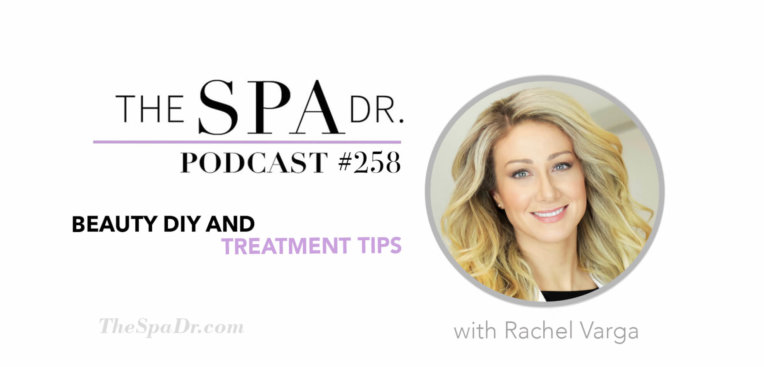
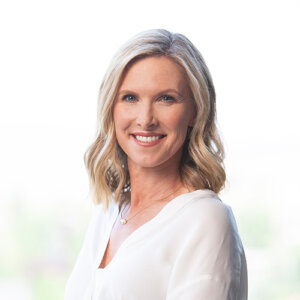
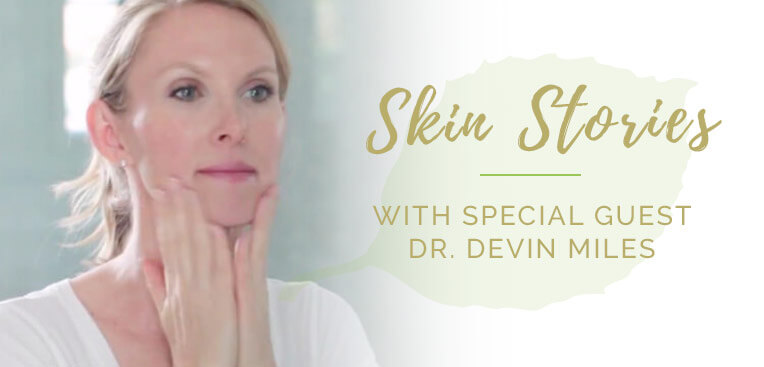
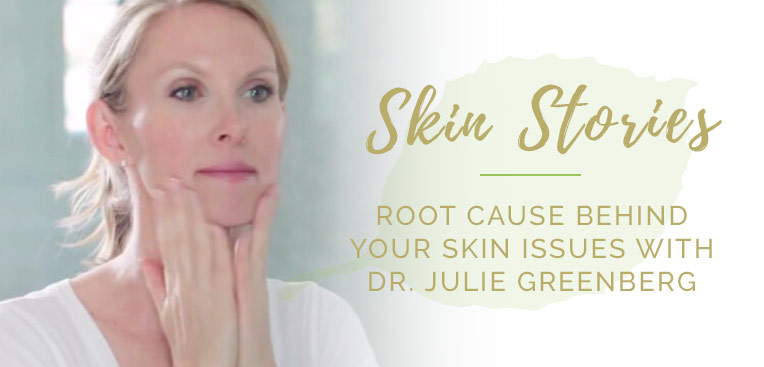
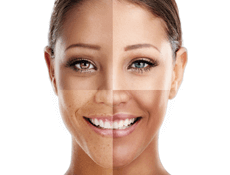
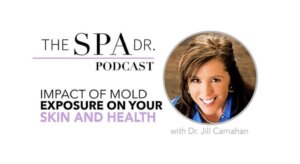
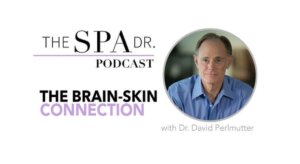

Reader Interactions